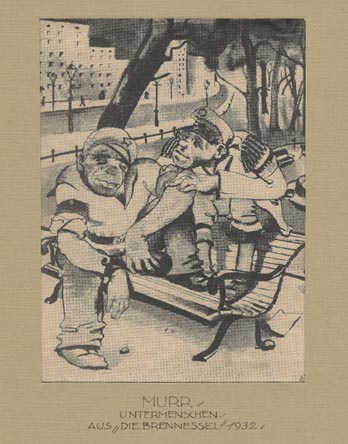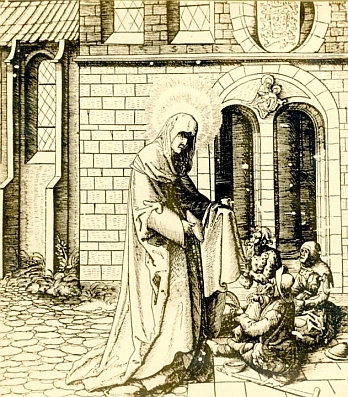Analysis Examples
As the projects develops we will be highlighting on this page key images and artworks from the collection which we have analysed. We will feature different elements from the collection, including photographs, prints and sculptures.

Untermenschen (Subhumans)
This caricature from Germany was published in the satirical Nazi propaganda magazine Die Brennessel (The Stinging Nettle). Two men sit intimately on a bench in a city park. They look like they are drunk, in a romantic relationship, and have an intellectual disability. Würtz probably saw these two figures as examples of his concept of "ugliness". The stars worn by one of them indicate communism. This man also holds an empty bottle in his hand. The uniform of the other indicate the Eiserne Front (Iron Front), a paramilitary organisation designed to defend the Weimar Republic against its political enemies. Thus, the caricature uses anti-communist, homophobic and ableist imagery to criticise the military cooperation between the Weimar Republic and the Soviet Union.

Sancta Oda
Artist: Wolfgang Resch. Date: 1517. Medium: Woodcut. Series: Saints connected with the House of Habsburg.
The woodcut portrays Saint Oda of Scotland who was born blind and miraculously healed wearing a long, hooded cloak. To her left are three conspicuously smaller figures of beggars, among them a man without a foot and another, visibly diseased, who is grasping the cloth that wrapped the saint’s loaf of bread.
The setting is a church or monastery exterior beneath an emblem of a Pietà and an unidentified heraldic crest. The image of saints towering over beggars is a historically well-established trope of charity and virtue.